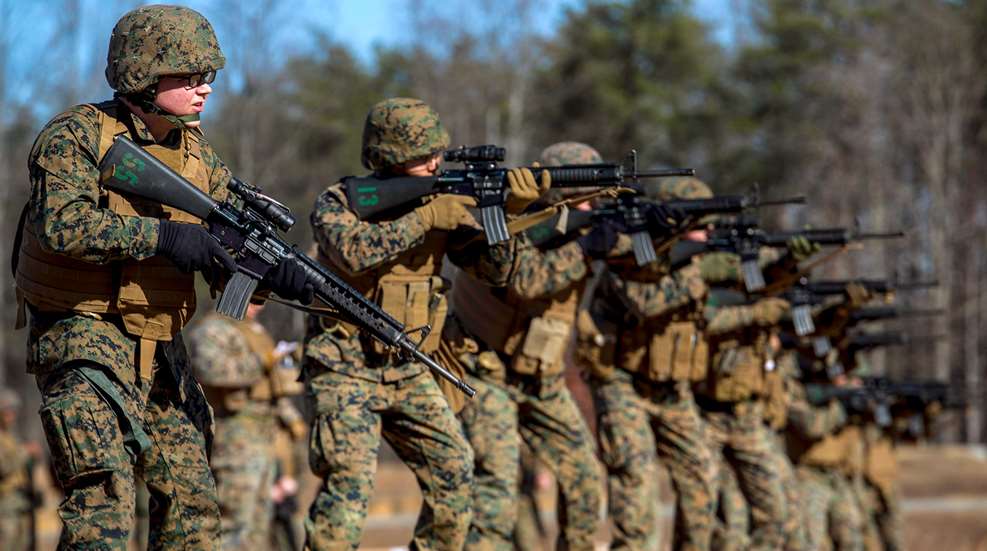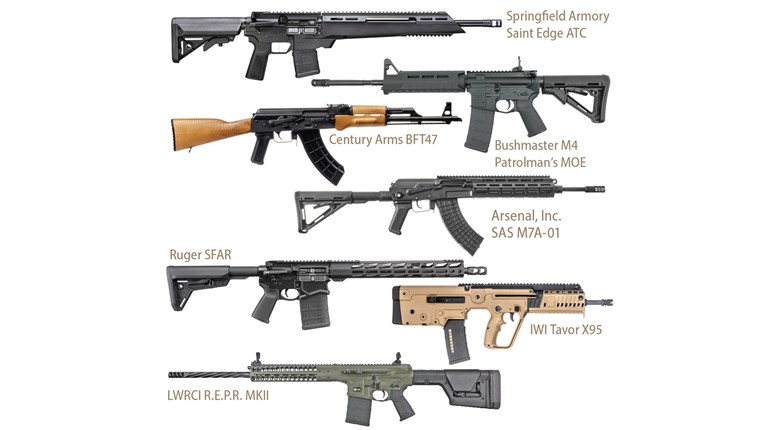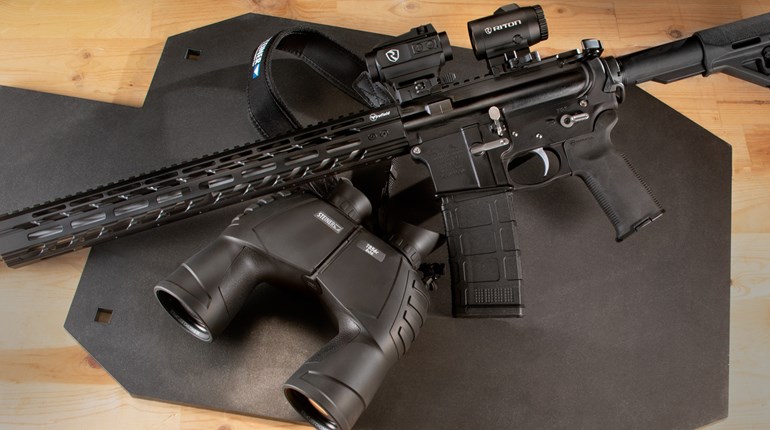
“Every Marine a Rifleman” is the slogan, but knowing the basics of solid riflecraft is important for anyone who owns a longarm.
I’ll wager that if you ask a dozen rifle shooters to describe a mastery of arms, some measure of excellence in a particular skill is likely to be included in each of the ideas you’ll receive. This is often expressed through specific achievements, such as championship titles, eye-popping big-game trophies or bragging rights to extremely difficult shots. All are worthy accomplishments, but they don’t always translate to practical skills outside of narrowly defined pursuits.
I’ve had the pleasure of knowing and working with some very talented, multi-national-champion, action-shooting competitors. Every one of them is amazing within their discipline(s). Yet, their sport-specific skills are only a fraction of what it takes to survive in the dynamic and utterly chaotic environments that characterize close-quarter urban fighting against determined opponents. Likewise, getting a trophy elk or whitetail into the record books requires dedication, skill, patience and the right equipment. However, those attributes only comprise a portion of what’s needed to successfully deal with equally armed and intelligent bipedal adversaries in a rural setting.
The same is true for precision shooting, whether one crushes the competition in a match or expends dozens of rounds to land one, record-setting hit on a truck-size target several miles away. Those accomplishments are significant, but they only scratch the surface of the abilities required to place precision, long-range shots on targets that can return equally accurate fire. Mastering the whole of rifle shooting requires proficiency in a wider range of talents than for any single pursuit of excellence.
Because the requisite skills change with technology, numerous facets of rifle competency have evolved over time. For example, in the early 19th century, Lewis Wetzel’s prowess with a flintlock rifle was legendary. Accounts of the time claimed that if he could see a target, Wetzel could hit it. Considering the rifles of that era, and assuming that Wetzel wasn’t severely nearsighted, that was an impressive claim.
An equally remarkable assertion has Wetzel reloading his flintlock rifle while at a dead run. Several authors recount fleet-footed pursuers chasing Wetzel as he turned, fired at the nearest and resumed running while reload-ing. Reportedly, this exercise was repeated until the sole remaining pursuer realized the next ball was his. Regardless of how Wetzel managed this technique, it’s an example of extreme rifle competency for the era.
Today’s wide range of rifle styles and operating systems has reduced and eliminated many of the functional challenges that our forebears faced. Modern rifles will outshoot most eyes, so matching Wetzel’s “hit anything you can see” capability now includes optics, ammo and distances that people in his day would find difficult to comprehend. Meanwhile, reloading at a dead run has been reduced to something that merely takes a little practice.
Once the best candidate rifle for one’s needs has been identified, it’s wise to become competent and confident with it before trying to master a whole collection. For starters, one should be able to safely and effectively load, operate, reload and unload/clear his or her rifle in the worst of conditions. This means under pressure of some sort, in foul weather, with cold or wet fingers and in low or no light. Equally essential is the ability to clear malfunctions and perform thorough maintenance on one’s rifle.
Unless you have a gunsmith handy, understanding the mechanics of your rifle is helpful for diagnosing and remedying basic problems. This point was driven home to me long before I learned how to build and repair firearms properly. As a SOF sniper/reconnaissance soldier, I often spent weeks or months as part of a two- to four-man team, operating hundreds of miles away from armorers or resupply. When something went wrong with one of our weapon systems, we had to either develop a field-expedient fix or lug it as dead weight. Because we were always outnumbered (and in someone else’s territory), having an unusable firearm was never a good or practical option.
Once you’ve mastered shooting from static and/or stable positions, spend time in uncomfortable postures so that making hits with less-steady footing is no longer a challenge. Examples are shooting from a knee in dense vegetation, assuming any position on uneven or rocky terrain or shooting from behind different types of cover without over-exposing yourself. I cannot overstate the importance of having a thorough grasp of your projectiles’ trajectories, as well as your own capabilities and limitations. Knowing what you can and cannot hit, in terms of target size, distance and environment, can help you avoid trouble and conserve ammo.
The ability to move smoothly (in any direction) while aiming and firing accurately at close, threat-size targets is another potentially life-saving skill. Start around 15 yards or so, observing all range safety rules, then progress out to 25 and 50. If you master that, move back (or reduce target sizes) until you find your limit.
Quality, formal instruction normally speeds the learning process for tasks like shooting at night, on the move, at multiple targets or at unknown distances. Prioritizing such training over the latest can’t-miss gadget, Gen17 smartphone or season tickets to a Second Amendment-hating sports entity is a wise investment of time and money. Ultimately, we should aim to become so familiar with our rifles that they function as extensions of our hands and eyes in life-threatening situations.
Once you’ve achieved that performance level, you can begin applying those skills to other rifles, though with your expectations set a bit lower. At a minimum, it’s useful to be able to safely operate other rifle types that may be encountered in less-than-ideal circumstances. However, maintaining the highest skills possible with your primary rifle should remain the principal focus. In linguistic terms, think of it as being fluent with your main long gun and conversational with other operating systems.
A friend and author recently shared James Oliver Curwood’s “The Wolf Hunters” with me. In it, Curwood opined a good rifle is “faithful to its master’s desires, keeping starvation at bay and holding death for his enemies; a guaranty of safety at his bedside by night, a sharp-fanged watchdog by day, never treacherous and never found wanting by the one who bestows upon it the care of a comrade and friend.” Curwood’s sentiment is right on the money. Once you identify the right “friend” for your needs, get to know it inside and out, so you’ll be well-served if trouble comes calling.





































